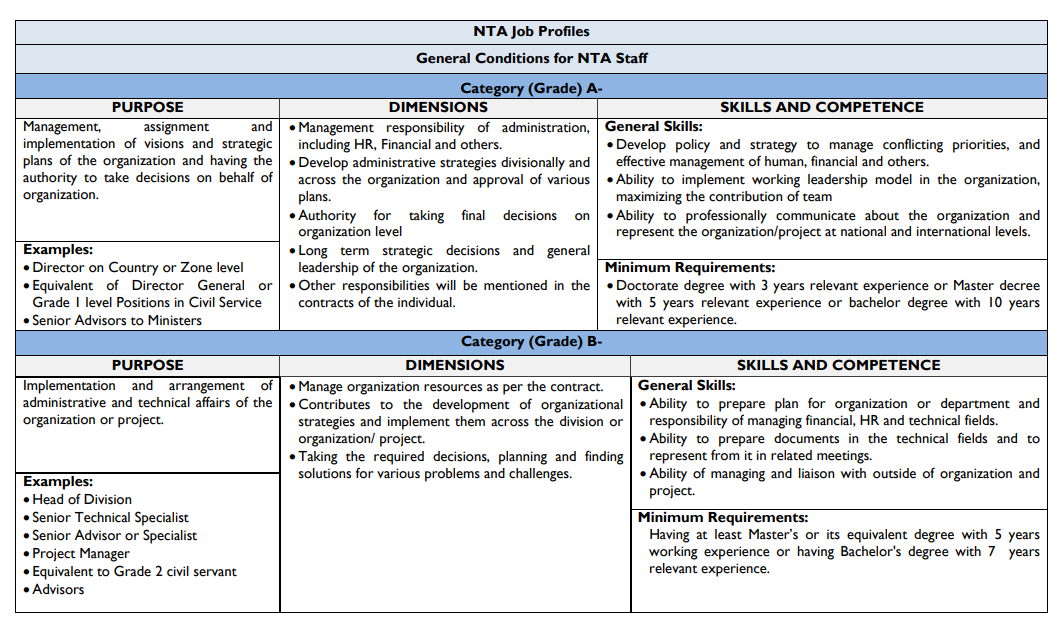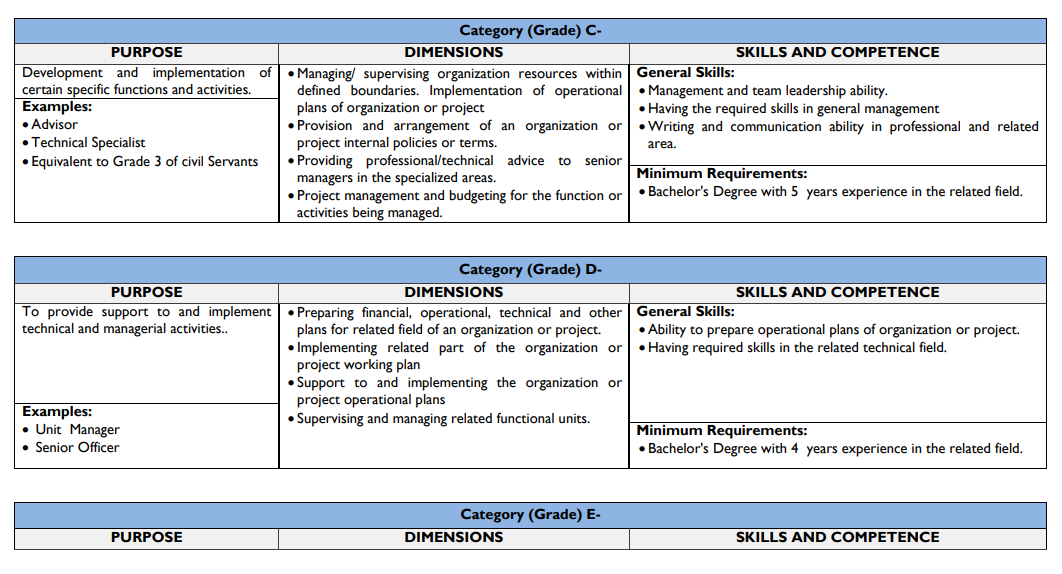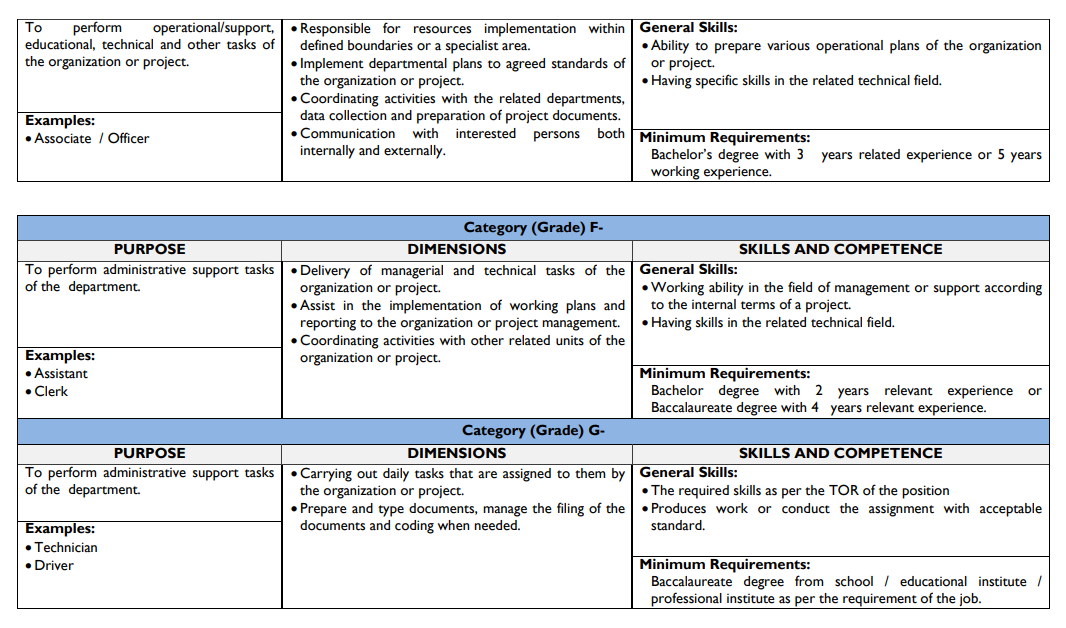National Technical Assistance (NTA) Salary Scale and Implementation Guideline in Afghanistan
The landscape of salary scales within Afghan line ministries has long been characterized by variant structures stemming from mutual agreements between ministries and donors. This diversity has bred challenges, including a lack of institutional memory due to high employee turnover, thereby hampering institutional strengthening. Moreover, salary inequalities among employees have hampered efficiency and created social challenges.
The recent approval of the Capacity Building for Results (CBR) salary scale and its applicability to NTA through a consensus reached in the Senior Official Meeting (SOM) indicates a step towards rectifying these issues. Following Presidential Decree No. 852, dated 7 Assad 1394, the development of an NTA salary scale and guideline was instructed, necessitating presentation to the Cabinet of Ministers for approval. The successful implementation of this guideline hinges upon the support and compliance of the Government of Afghanistan and international donors.
Objectives and Target Group
The primary objective behind the development of the Salary Scale and Guideline is to harmonize the pay structures of national staff working for the Afghan Government, excluding official Tashkeel positions, including Externally Funded Staff (EFS) supported by international donors. The overarching goals include establishing a consistent, fair pay framework for all NTA, ensuring fiscal sustainability, enhancing government control over NTA deliverables, and avoiding competition with CBR while ensuring transparency and accountability.
The scope of the NTA Salary Scale and Guideline covers the remuneration packages for national staff operating within GoIRA ministries and other public agencies on national and sub-national levels, working outside the official Tashkeel. This encompasses individuals hired by GoIRA but paid by donor agencies through the GoIRA core budget, as well as those funded through off-budget programs by donor agencies or implementing partners, embedded within line ministries. However, it is important to note that this scale does not apply to staff directly hired by donors for their offices or short-term technical consultants hired either by international donors or the Government of Afghanistan (up to 3 months).
Addressing the Problem Statement
The Afghan Government’s consistent implementation of selective reforms since 2001 in public institutions aimed to enhance structural capacity and pay scales for efficient administration. The P &G System introduced in 2008 offered a degree of consistency in civil servant payments but struggled to retain professionals due to inflation and increased living costs. The system, consisting of eight grades (G1-G8) with five steps per grade, provides salaries ranging from Afghanis 5,000 to Afghanis 32,500 per month, augmented by non-cash benefits. To retain technical staff in technical positions, the Government introduced Super Scale benefits and subsequent program-based allowances such as the Management Capacity Program (MCP) and the Capacity Building for Results Facility (CBR).
The NTA Salary Scale closely aligns with the CBR salary scale from grades 1 – 5, covering all levels of NTA with additional grades. Given the local socio-economic context, establishing a consistent methodology for harmonizing the NTA salary scale becomes imperative. Not only will this foster project performance and service delivery but it will also fortify job security and cooperation among concerned agencies and institutions.




Salary Scale for NTA Staff
The remuneration structure for National Technical Assistance (NTA) employees in Afghanistan is structured into eight distinct grades, each comprising ten steps. This delineation allows for a structured and comprehensive framework to ascertain salaries for NTA staff members.
Within this salary scale, every step in each grade is determined by a fixed interval, strategically established through a variant multiplier based on the original salary of a civil servant under the P&G system. This calculation method ensures a balanced and equitable approach to remunerating NTA employees, considering various factors that influence this salary scale.
The intricate nature of the NTA salary scale is meticulously detailed within the guideline, encompassing all contributing elements and considerations that impact the determination of salaries. Moreover, it’s imperative to note that all salaries under this scale are denominated in Afghani currency, in line with the stipulations outlined in the NTA Salary Scale and Guideline. During the formulation of this scale, a consistent exchange rate of 1 USD = 64 Afghani was utilized as a benchmark.
The system’s design, integrating eight distinct grades and ten steps within each, ensures a structured approach to salary determination for NTA staff members. This systematic arrangement caters to various factors affecting compensation, maintaining a fair and consistent approach in line with the guidelines and the economic landscape of Afghanistan.

Implementation Conditions of the NTA Guideline: A Framework for Efficient Oversight and Compliance
The implementation of the NTA salary scale and guideline in Afghanistan demands a strategic, phased approach to harmonize salary structures while navigating contract adjustments. Detailed below are the critical tasks necessary to successfully roll out and execute this guideline:
A. New Recruitments
- Initial Offer: Newly recruited staff should be extended an offer based on the first step of the relevant NTA Salary Scale category/grade. Candidates possessing a master’s or Ph.D. degree may be offered an additional step, while those with two years’ extra experience beyond TOR specifications may also qualify for an additional step. Technical positions may warrant an extra step, but offers must not exceed step 5 of the same grade, barring exceptional circumstances.
- Promotion Criteria: Progression between steps should only occur post a successful annual performance appraisal conducted by the relevant organization. The salary level cannot be elevated without a performance appraisal. It’s recommended to utilize the CBR standard format for appraisal, albeit subject to individual project procedures.
- Merit-Based Recruitment: All NTA recruitment should strictly adhere to merit-based open competitive processes. Direct recruitment without following this process is only permissible for highly technical positions (excluding all management positions).
- Terms of Reference (TOR): NTA Terms of Reference will adhere to a standard format, functioning as an annex to this Guideline.
- Inclusions in Salary Scale: The NTA Salary Scale encompasses all regular benefits and allowances, excluding transportation, communication, and insurance, which should be provided according to internal organizational agreements.
B. Current NTA
- Contract Renewal: Contracts for current NTA will be renewed based on this Salary Scale and Guideline upon their contract completion. Contracts pending beyond June 31, 2016, will be adjusted in line with the Guideline.
- Notification Obligation: International Donors and GoRIAs offices are required to notify their relevant NTAs about contract adjustments, aligning with the mentioned dates.
- Adherence to Scale: Contracts falling below the salary scale and guideline range should maintain their existing terms until the project’s completion.
8. Supervision & Compliance
- A Supervisory Committee, established in January 2016 within the Ministry of Finance’s Budget Department, comprises representatives from IARCSC, World Bank (representing ARTF responsibilities), and a rotating key donor member. It operates under MOF/Budget Department leadership, ensuring adherence to the NTA Salary Scale and Guideline.
9. Critical Success Factors
A series of key success factors are critical for the successful implementation of the NTA guideline:
- Agreement and compliance among donors to adjust NTA contracts within the guideline timeframe.
- Establishment of the Supervisory Committee.
- Creation of an NTA Database within the Ministry of Finance.
- Gradual guideline implementation and revision, if necessary.
- Efficient coordination between donors and GoIRA.
10. Expected Results of the Guideline Implementation
The implementation of this guideline will standardize NTA staff salaries across various agencies, including the Government of Afghanistan and international donors. Anticipated outcomes include:
- Enhanced government control over NTA salaries.
- Establishment of a fair, transparent, and consistent pay scale.
- Strengthening fiscal sustainability.
- Mitigation of recruitment corruption and reduction in employee turnover.
- Preservation of organizational history and promotion of social justice in income distribution.
- Prevention of excessive salaries to some employees.

Acronyms and Abbreviations Used in this Article
| Acronym | Full Form |
|---|---|
| ADB | Asian Development Bank |
| CSMD | Civil Service Management Department |
| GoIRA | Government of Islamic Republic of Afghanistan |
| IARCSC | Independent Administrative Reform & Civil Service Commission |
| MOF | Ministry of Finance |
| NTA | National Technical Assistance |
| SOM | Senior Official Meeting |
| USAID | United States Agency for International Development |
| WB | World Bank |
| WG | Working Group |
